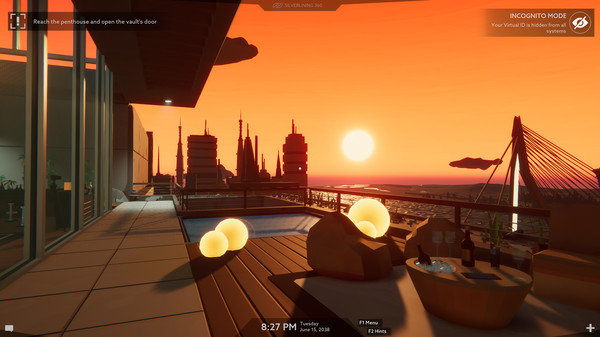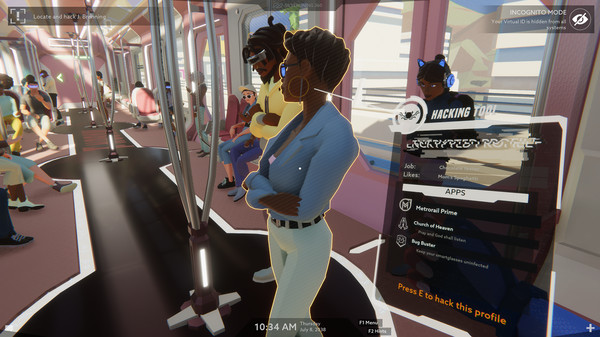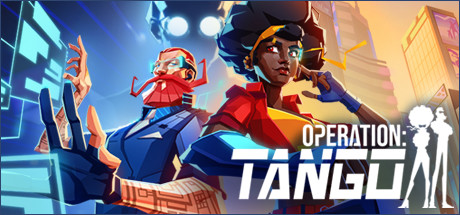Operation Tango is a captivating cooperative spy thriller that pairs an Agent and a Hacker in a race against time to foil international threats. Built around asymmetrical gameplay, players trade critical intel in real time, negotiating a constantly shifting web of security networks and environmental puzzles.
Overview Operation Tango
Operation Tango imagines espionage for the 21st-century living room. The Agent slides through the field, eyes up and trigger finger steady. The Hacker sits a continent away, fingers flying across code, stripping façade and firewall. Some security door waits for a custom key, some floor panel for a blip it should never detect. Currently traditional shoot-and-cover mechanics fall silent; only dialogue, screenshots, and screen-sharing keep the mission alive.
Developed by Clever Plays, the title spaces squads in radically separate dimensions. The Agent scans a muted screen of 3D corridors; the Hacker sifts through terminal windows and holographic diagrams alive with blinking red threats. Each assignment is a vertiginous leap, from slipping aboard an airborne yacht to redirecting blazing cyber strikes. All is underpinned by the cobalt-and-charcoal sheen borrowed from a hundred favorite spy films.
Operation Tango insists on human pairs. No AI will simulate the pulse of another player’s heartbeat, no lone wolf can read the signs of withheld detail. The game is cross-platform, so a buddy on a fridge-size gaming rig can chat strain with a parent on a couch-bound console. Missions stack to 3 to 5 hours, meant for a breathless afternoon or replay under new voices. Every curtain rise conceals a fresh twist, every exit reorients the city. For the duo that prizes locked-lab challenges or braided narratives of choice, Operation Tango rewrites the rules of agency.
Gameplay
In Operation Tango, only cooperation breathes. One player embodies the Agent in an immersive first-person viewpoint, traversing physical barriers, slipping past guards, and manipulating environmental systems. The second player adopts the role of the Hacker, wielding an advanced remote interface to commandeer cameras, override secured doors, and dissect data feeds.
The separation of screens mandates uninterrupted verbal coordination; the Hacker might direct the Agent through an encroaching laser array, while the Agent transmits hard-won security codes back through the line. The design forgoes guidance prompts, favoring experimentation, critical reasoning, and adaptation amid tight timeframes. Castle Crashers
With each mission, difficulty layers in cyber puzzles, environmental stealth, and ticking deadlines. A mission abort restarts the sequence, yet a roster of checkpoints mitigates punishment and preserves momentum. The exclusion of firearms pivots the focus to intellect, fulfilling the craving of puzzle-centric pairs. Cross-play compatibility invites friends to collaborate, regardless of platform, for uninterrupted and consequential clandestine action.

Game Features
- Asymmetrical Cooperative Structure: Distinct Agent and Hacker roles paired with diverging systems.
- Mandatory Real-Time Communication: No computational assistance; the experience hinges on player synergy.
- Engaging Spy Missions: Breach fortifications, neutralize hazards, and unravel digital enigmas.
- Cross-Platform Collaboration: Unite on PC, PlayStation, or Xbox without barriers.
- Sophisticated Aesthetics and Soundtrack: Evocative, high-definition visuals paired with a score reminiscent of contemporary espionage cinema.
- Concise yet Revisit-Ready: Missions span 3 to 5 hours, designed for multiple, varied completions.
System Requirements
Minimum
- OS: Windows 10 (64-bit)
- CPU: Intel Core i5-2500K / AMD FX-6300
- RAM: 8 GB
- GPU: NVIDIA GTX 760 / AMD Radeon R9 270
- Storage: 5 GB
- Internet: Required for online co-op
Recommended
- OS: Windows 10 (64-bit)
- CPU: Intel Core i7-4770K / AMD Ryzen 5 1500X
- RAM: 16 GB
- GPU: NVIDIA GTX 1060 / AMD RX 580
- Storage: 5 GB
- Internet: Required for online co-op


